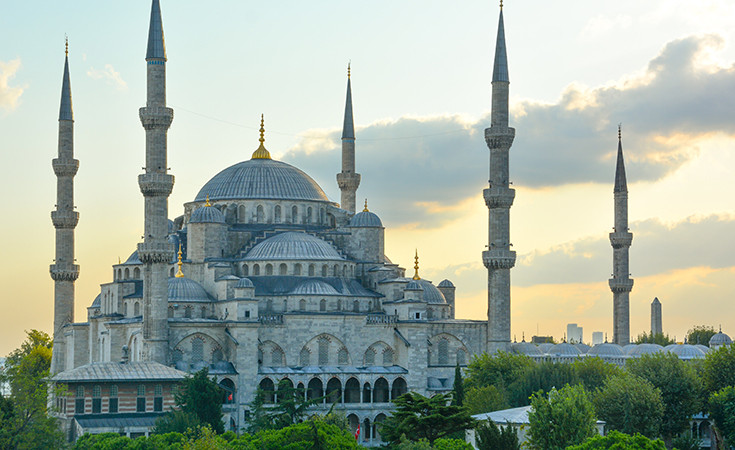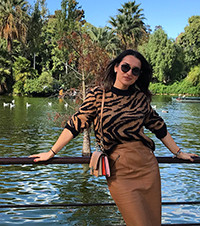
The Blue Mosque is probably the most beautiful mosque in Istanbul. The Sultan Ahmed Mosque, as it is actually called, got its second name Blue Mosque because of its 20,000 blue tiles inside the mosque. Tulips are painted on the tiles, and you can see verses from the Koran on the walls of the mosque. It is located in the old part of the historic city, with a total of six minarets, right next to Hagia Sophia. In front of the mosque there is a green landscaped area and a very beautiful fountain. It is considered one of the most visited sights of Istanbul. It was created between 1609 and 1616 during the reign of Sultan Ahemed, after whom the mosque was named.
The founder's tomb, a hall and a madrasa are located inside it. After peace was concluded and the war between the Ottomans and Persia ended, Sultan Ahmed advocated the idea of building the Blue Mosque and decided to build it. He wanted to create a place of prayer and to express his affection towards Allah. After 40 years, this is the first mosque built in the city. The war losses were great and for the construction of Ahmed's mosque, Ahmed gave his money from the treasury. Numerous indignations were felt by educated officials. The mosque began to be built on the site where the foundations of Constantine's palace were.
Also, there were palaces that had to be demolished and then bought to make room for the new mosque. Sultan Ahmed laid the foundation stone and construction began in 1609. The main supervision of the construction was the royal architect Sedefhar Mehmed - aga. What is interesting is that records were made, that is, books with all the descriptions of how the construction went on, and they are kept in Topkapi Palace. The mosque opened its doors in 1617.
The style in which the mosque was built is the classic period of the Ottoman Empire. It reflects the style of the Eastern Roman Empire and the traditional Islamic style.
On the west side of the entrance there is a metal chain and only the sultan had access from that side, and upon entering he had to bow his head, which indicates the sultan's humility towards the very and close proximity.
The Blue Mosque underwent reconstruction in 2021 and was closed to visitors.
• You should go to the mosque dressed appropriately, women must wear headscarves
• Entrance to the mosque is free, but you can certainly leave a contribution
• It is located in the historical part of the city.
Author of the text:

Maja Glavaš, Bachelor with Honours in Communicology. Works in Tourism.
Contact: [email protected]; instagram: travel_europe1
Photo by Adli Wahid on Unsplash